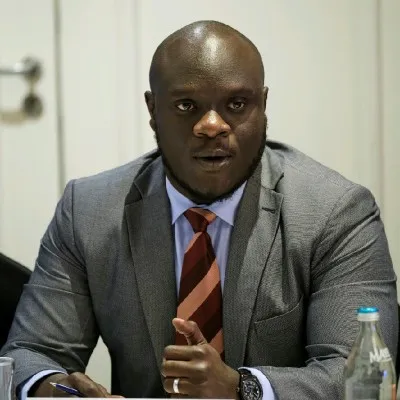Starlink’s rapid expansion of its satellite internet service across Africa over the past two years has elicited mixed reactions. With speeds significantly surpassing those of fixed broadband providers, an increasing number of consumers and businesses on the continent are eager to adopt the service. However, telecommunications companies (telcos) and internet service providers who have invested heavily in local network infrastructure are apprehensive about Starlink and the formidable competition it represents.
Nigeria, the continent’s most populous nation, was the first African country to adopt Starlink in January 2023. Since then, the satellite internet service has briskly expanded to 15 additional countries across the continent, with Zimbabwe being the latest to approve operations in September. Elon Musk, the owner of Starlink through SpaceX, announced in September that the service is awaiting “regulatory approval” in South Africa, his birthplace and the continent’s most advanced economy.
This statement followed a meeting with President Cyril Ramaphosa on the sidelines of the UN General Assembly (UNGA) in New York to discuss Starlink’s potential deployment.
“I have had discussions with him and have said, Elon, you have become so successful and you’re investing in a variety of countries, I want you to come home and invest here,” Ramaphosa told reporters in Pretoria after returning from the US. “He and I are going to have a further discussion,” he added.
Starlink is yet to provide a launch date for South Africa, indicating that negotiations with the government are still underway despite optimistic remarks from both Musk and Ramaphosa. Notably, South Africa remains the only southern African nation that has not approved Starlink’s operations.
Pretoria demands local ownership
Analysts say that a major sticking point in negotiations has been South Africa’s insistence that Starlink should cede at least 30% equity to local ownership by black people, women, youth and people living with disabilities – a requirement for any telecommunications company seeking a licence in the country.
Kenya had a similar local ownership requirement but was persuaded by Starlink to waive it last year, according to local reports.
Starlink delivers high-speed internet through a network of approximately 5,500 low-Earth orbit (LEO) satellites that SpaceX started deploying in 2019. With 2.6m customers globally, the service is targeting expansion in under-served markets, such as those in Africa, to turbocharge growth.
Various performance tests indicate that Starlink’s download speeds can exceed 100 megabits per second in several countries, enhancing the quality of internet-powered activities including live streaming, online gaming and video calls. This high-speed connectivity, including in remote areas, makes Starlink a compelling alternative to traditional terrestrial internet providers.
Incumbents up in arms
Starlink’s ambitious plans for Africa have drawn criticism from local telcos and internet service providers, who argue that the global company has an unfair advantage due to its limited investment in local network infrastructure.
“We have a foreign company coming in, doing the bare minimum, and then taking market share from companies that have invested heavily in the continent and are providing jobs for thousands of people,” said Temidayo Oniosun, CEO of Space in Africa, a Lagos-based media and analytics company focusing on the African space and satellite industry.
Steve Song, a policy advisor at the Mozilla Foundation and internet access advocate, contends that Starlink satellites are “economically lopsided, extracting value without contributing to local economies”.
“Starlink will not even invest in ground stations in countries where they don’t see enough revenue… We need to talk about space and its regulation. The 1960s saw a time of internationalisation in space, a view of it as a shared resource for all. We can still get back there but not if Elon Musk and Jeff Bezos establish de facto rules simply by occupying that territory,” he argues.
Internet service providers (ISPs) and telcos in Kenya, Zimbabwe, Nigeria, and Cameroon have also voiced concerns about Starlink’s free rein, lax regulatory requirements, and their inability to compete fairly with its services and pricing. These companies employ thousands of people across the region, while Starlink has minimal local presence.
Safaricom, Kenya’s largest mobile network operator, wrote to the Communications Authority of Kenya (CA) in July expressing concerns about the granting of independent licences to satellite internet providers. The company urged the industry regulator to impose stricter licensing requirements on satellite providers.
Safaricom argued that the direct entry by satellite operators poses a threat to both mobile network quality and national security. The company cited concerns about potential interference and illegal service provision within Kenyan borders due to the wide-ranging geographic coverage of satellite networks.
“Satellite coverage inherently spans multiple territorial borders and in doing so has the potential to illegally provide services and cause harmful interference within the territorial borders of the Republic of Kenya,” the letter said.
To mitigate these risks, Safaricom proposes that satellite operators be restricted to providing infrastructure services, while existing mobile network operators retain operating licences. “We propose that the CA instead consider mandating the satellite providers to only operate in Kenya subject to such providers establishing an agreement with an existing local licensee.”
Welcoming competition
Kenya’s President William Ruto urged Safaricom and other internet service providers to welcome competition, not fight it. “I have my CEO for Safaricom – sometimes he’s not very happy with me for bringing other characters like Elon Musk and others into the space. I keep encouraging Peter (Ndegwa, Safaricom’s CEO) that competition makes you keep ahead and he’s been doing pretty well, I must admit; he’s really upped his game,” Ruto said at a business roundtable with US investors on the sidelines of the UNGA meetings.
Ndegwa, who was also at the meetings in New York, addressed questions about the company’s stance on competition during an interview with Bloomberg TV. “We don’t have the ability to prevent anyone from operating in Kenya. That is a regulatory decision,” Ndegwa stated, emphasising that Safaricom’s success is driven by its annual investment of $300m to $350m in expanding Kenya’s telecommunications infrastructure.
Meanwhile, data from the industry regulator indicates a significant surge in satellite subscriptions in Kenya since Starlink was granted a licence in mid-2023. Subscriptions have rocketed from 405 in June last year to 4,808 in March, and then to 8,324 in June.
The data further show that Starlink held a market share of 0.5% in Kenya by June. Although this pales in comparison to Safaricom’s 36.4%, it places Starlink among the top 10 internet service providers in a market of about 60 players, within its first full year of operations.
Ndegwa has, however, reiterated in local media that the company is not worried about competition and that there is a “big opportunity for all players”. He pointed out that only around 15% of the more than 10m homes and businesses in Kenya have access to reliable internet, highlighting the untapped market opportunity.
Overcoming cost barriers
Globally, one of Starlink’s most appealing features is its end-user pricing. Monthly subscription fees vary significantly by country, ranging from $25 to $100, while hardware costs for the Starlink terminal range between $200 and $650. However, for the vast majority of businesses and households in Africa, these costs remain prohibitively high.
Starlink has introduced steep discounts and kit rental models in some markets across the continent, such as Kenya. The price of Starlink’s hardware kit in Kenya has in recent months been halved to Sh45,000 ($347) from Sh90,000 ($694), with the option to purchase a scaled-down version for Sh27,000 ($208). Additionally, Starlink has launched a monthly rental plan for its equipment at Sh1,950 ($15), helping cost-sensitive consumers and businesses access the service without having to own it.
But the costs of getting connected via Starlink still represent a significant expense for many in Kenya and in Africa more broadly. More than half of Africa’s population resides in rural areas where incomes are modest and reliable internet access remains a significant challenge.
In early 2024 Africa’s internet penetration rate stood at approximately 43%, well below the global average of 66%. Countries like South Sudan, Burundi, and the Central African Republic have some of the lowest penetration rates, with figures as low as 12.1%, 11.3%, and 10.6% respectively. Africa also lags behind other regions in terms of internet speeds.
Experts argue that overcoming cost barriers associated with satellite internet technology could be instrumental in connecting millions of Africans who lack access to fast, reliable internet. This calls for strategic partnerships between LEO satellite operators such as Starlink and local telecom companies to deliver affordable and reliable internet to underserved areas.
Mazen Mroué, chief technology and information officer at MTN Group, explains that the company is leveraging satellite partnerships to accelerate digital inclusion in Africa. LEO satellite technology like Starlink’s can provide direct-to-cell internet and phone service by acting like a cell tower in space, allowing users with standard mobile phones to connect to fast satellite internet without needing any special equipment or modifications to their device.
“We are partnering for LEO satellite connectivity to connect the unconnected, extend mobile connectivity to more rural and remote areas and improve resilience. In this way, we are working to achieve our goal of 95% broadband population coverage across our footprint by 2025, from 88% in 2022,” he noted, underlining the opportunity for telcos to partner – rather than compete directly – with players like Starlink.
Want to continue reading? Subscribe today.
You've read all your free articles for this month! Subscribe now to enjoy full access to our content.
Digital Monthly
£8.00 / month
Receive full unlimited access to our articles, opinions, podcasts and more.
Digital Yearly
£70.00 / year
Our best value offer - save £26 and gain access to all of our digital content for an entire year!

 Sign in with Google
Sign in with Google 



